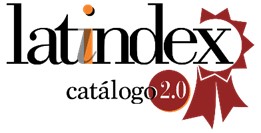A imagem da matemática de alunos mexicanos do ensino secundário
DOI:
https://doi.org/10.48489/quadrante.31946Palavras-chave:
imagens da matemática, alunos do ensino secundário, educação matemáticaResumo
Este estudo tem como objetivo compreender as imagens da matemática dos estudantes mexicanos do ensino secundário. A imagem da matemática é definida como uma representação mental da matemática e, para a identificar, foram estabelecidos quatro pontos focais: (1) descrições do processo de aprendizagem da matemática, (2) crenças sobre a natureza da matemática, (3) apreciações da matemática e (4) emoções. Foram utilizados desenhos elaborados pelos alunos como instrumento de recolha de dados. A cada aluno, de um conjunto de 138 estudantes, foi solicitado um desenho como resposta à pergunta: O que é a matemática? Os desenhos dos alunos indicam que a matemática é vista como constituída por operações e representações geométricas, e valorizam-na como uma disciplina a aplicar. Além disso, verificou-se que os alunos experimentam emoções de angústia e satisfação decorrentes da matemática. Relativamente ao processo de aprendizagem, o papel do professor é proeminente nos desenhos. Por fim, o artigo conclui com possíveis implicações para o ensino.
Referências
Belbase, S. (2013). Images, anxieties, and attitudes toward mathematics. International Journal of Education in Mathematics, Science and Technology, 1(4), 230–237. https://ijemst.net/index.php/ijemst/article/view/14
Berry, J. S., & Picker, S. H. (2000). Your pupils’ images of mathematicians and mathematics. Mathematics in School, 29(2), 24–26. https://www.jstor.org/stable/30212098
Castañeda, A., Sánchez, M., Gómez-Blancarte, A. L., Romo-Vázquez, A., Lezama-Andalón, J., & Miranda-Viramontes, I. (2019). Representations of mathematicians in lower secondary mathematics textbooks. EURASIA Journal of Mathematics, Science and Technology Education, 15(7), 1–13. https://doi.org/10.29333/ejmste/106056
Chang, H. Y., Lin, T. J., Lee, M. H., Lee, S. W. Y., Lin, T. C., Tan, A. L., & Tsai, C. C. (2020). A systematic review of trends and findings in research employing drawing assessment in science education. Studies in Science Education, 56(1), 77–110. https://doi.org/10.1080/03057267.2020.1735822
Chionas, G., & Emvalotis, A. (2021). How Peruvian secondary students view scientists and their works: Ready, set, and draw! International Journal of Education in Mathematics. Science and Technology, 9(1), 116–137. https://doi.org/10.46328/ijemst.1099
Fuys, D., & Huinker, D. (2000). Children as Mathematicians. Teaching Children Mathematics, 6(6), 341.
García-González, M. S., & Martínez-Padrón, O. (2020). Conocimiento emocional de profesores de matemáticas [Emotional knowledge of mathematics teachers]. Educación Matemática, 32, 157–177. https://www.revista-educacion-matematica.org.mx/descargas/vol32/1/07REM32-1.pdf
Grevholm, B. (2010). Norwegian upper secondary school students’ views of mathematics and images of mathematicians. In K. Kislenko, (Ed.), Current state of research on mathematical beliefs. XVI Proceedings of the MAVI-16. (pp. 120–136). Tallin, Estonia. https://www.mathematical-views.org/wp-content/uploads/sites/10/2020/06/proceedings_mavi16.pdf
Hatisaru, V. (2019). Lower secondary students’ view about mathematicians depicted as mathematics teachers. International Journal on Mathematics, Science and Technology Education, 7(2), 27–49. https://doi.org/10.31129/LUMAT.7.2.355
Hatisaru, V. (2020). School student’s depictions of mathematics teaching and learning practices. International Electronic Journal of Elementary Education, 13(2), 199–214. https://doi.org/10.26822/iejee.2021.184
Hatisaru, V., & Murphy, C. (2019). “Creature” Teachers “Monster” Mathematicians: Students’ views about mathematicians and their attitudes to mathematics. International Journal of Education in Mathematics, Science and Technology, 7(3), 215–221.
Henrion, C. (1997). Women in mathematics: the addition of difference. Indiana University Press.
Hoyles, C. (1982). The pupil’s view of mathematics learning. Educational Studies in Mathematics, 13(4), 349–372. https://www.jstor.org/stable/3482321
Lane, C. (2017). Student’s images of mathematics: The role of parent’s occupation. In T. Dooley & G. Gueudet, (Eds.), Proceedings of the Tenth Congress of the European Society for Research in Mathematics Education, (pp. 1130–1137). ERME. http://hdl.handle.net/10344/8793
Lane, C., Stynes, M., & O’Donogue, J. (2014). The image of mathematics held by Irish post-primary students. International Journal of Mathematical Education in Science and Technology, 45(6), 879–891. https://doi.org/10.1080/0020739X.2016.1170899
Lim, C. S., & Ernest, P. (2000). A survey of public images of mathematics. Research in Mathematics Education, 21(1), 193–206. https://doi.org/10.1080/14794800008520076
Martin, L., & Gourley-Delaney, P. (2014). Students’ images of mathematics. Instructional Science: An International Journal of the Learning Science, 42(4), 595–614. https://doi.org/10.1007/s11251-013-9293-2
Martínez-Sierra, G., & García-González, M. S. (2017). Students’ emotions in the high school mathematics classroom: The appraisals in terms of a structure of goals. International Journal of Science and Mathematics Education, 15(2), 349–369. http://doi.org/10.1007/s11251-013-9293-2
Masz, J., & Schlöglmann, W. (2009). Beliefs and Attitudes in Mathematics Education. Sense Publishers.
McLeod, D. (1989). Beliefs, attitudes, and emotions: New views of affect in Mathematics Education. In D. B. McLeod & D. M. Adams. (Eds.), Affect and mathematical problem solving (pp. 245–258). Springer.
Moreau, M. P., Mendick, H., & Epstein, D. (2009). What do GCSE students think of mathematicians? Mathematics in School, 38(5), 2–4.
Ortony, A., Clore, G. L., & Collins, A. (1996). The cognitive structure of emotions. Cambridge University Press.
Piatek-Jimenez, K. (2008). Images of mathematicians: a new perspective on the shortage of women in mathematical careers. ZDM Mathematics Education, 40, 633–646. https://doi.org/10.1007/s11858-008-0126-8
Piatek-Jimenez, K., Nouhan, M., & Williams, M. (2020). College students’ images of mathematicians and mathematical careers. Journal of Humanistic Mathematics, 10(1), 66–100. https://doi.org/10.5642/jhummath.202001.06
Picker, S. H., & Berry, J. S. (2000). Investigating pupil’s images of mathematicians. Educational Studies in Mathematics, 43(1), 65–94. https://doi.org/10.1023/A:1017523230758
Rock, D., & Shaw, J. M. (2000). Exploring children’s thinking about mathematicians and their work. Teaching Children Mathematics, 6(9), 550–555. https://doi.org/10.5951/TCM.6.9.0550
Rothbauer, P. (2008). Triangulation. In L. M. Given (Ed.). The SAGE Encyclopedia of Qualitative Research Methods (Volume 1 & 2). SAGE.
Sam, L. C., & Ernest, P. (2000). A survey of public image of mathematics. Research in Mathematics Education, 2(1), 193–206. https://doi.org/10.1080/14794800008520076
Sánchez, M., Rosas, A., & Molina, J. G. (2012). Mexican student’s images of mathematicians. In S. J. Cho (Ed.). Proceedings of the 12th International Congress on Mathematical Education. (pp. 5838–5847). ICME. https://mariosanchezaguilar.files.wordpress.com/2012/10/aguilar_rosas_zavaleta_2012.pdf
Sánchez, M., Rosas, A., Molina, J. G., & Romo-Vázquez, A. (2016). Exploring high achieving students’ images of mathematicians. International Journal of Science and Mathematics Education, 14, 527–548. https://doi.org/10.1007/s10763-014-9586-1
Stiles, D. A., Adkisson, J. L., Sebben, D., & Tamashiro, R. (2008). Pictures of hearts and daggers: Strong emotions are expressed in young adolescents’ drawings of their attitudes towards mathematics. World Cultures eJournal, 16(2), 1–13. https://escholarship.org/uc/item/1sq263b7
Takeuchi, M. A., Towers, J., & Plosz, J. (2016). Early years students’ relationships with mathematics. Alberta Journal of Educational Research, 62(2), 168–183. https://doi.org/10.11575/ajer.v62i2.56197
Thomas, J. A., Pedersen, J. E., & Finson, K. (2001). Validating the Draw-A-Science-Teacher-Test Checklist (DASTT-C): Exploring Mental Models and Teacher Beliefs. Journal of Science Teacher Education, 12(3), 295–310. https://doi.org/10.1023/A:1014216328867
Thomas, M. D., Henley, T. B., & Snell, C. M. (2006). The draw a scientist test: A different population and a somewhat different story. College Student Journal, 40, 140–148.
Turgut, S., & Turgut, I. G. (2020). Me when I am learning mathematics: Reflections to elementary school student’s drawings. International Electronic Journal of Elementary Education, 13(1), 139–154. https://www.iejee.com/index.php/IEJEE/article/view/1246
Yazlik, D. O., & Erdogan, A. (2016). Image of the high school students towards mathematicians. Journal of Educational and Instructional Studies in the World, 6(4), 1–14.
Yazlik, D. O., & Erdogan, A. (2018). Examining the image of prospective teachers towards mathematicians. Universal Journal of Educational Research, 6(1), 42–56. https://doi.org/10.13189/ujer.2018.060104











